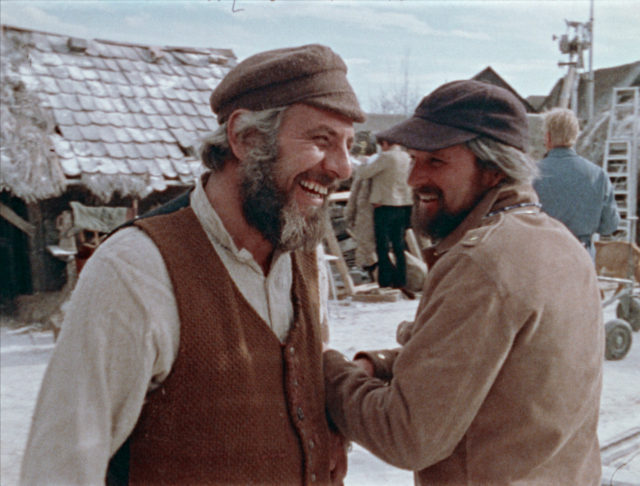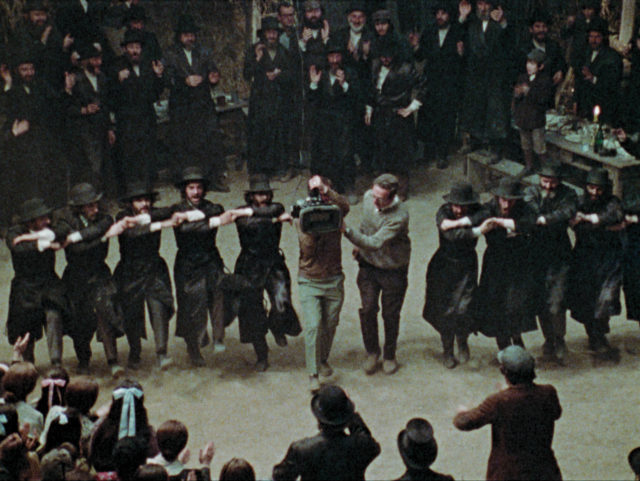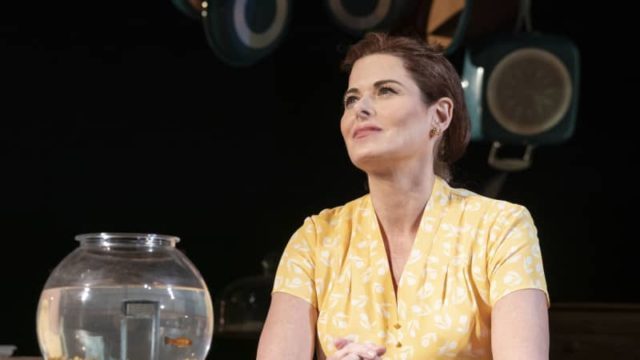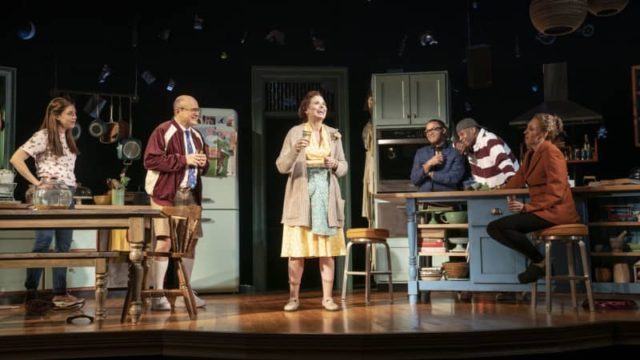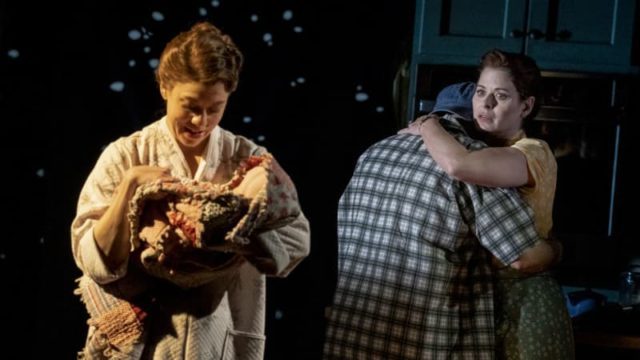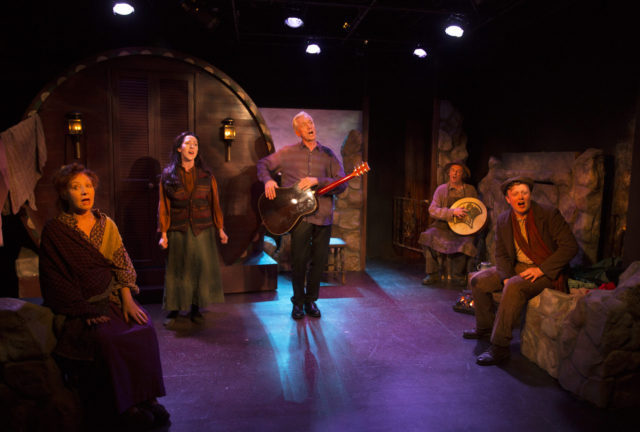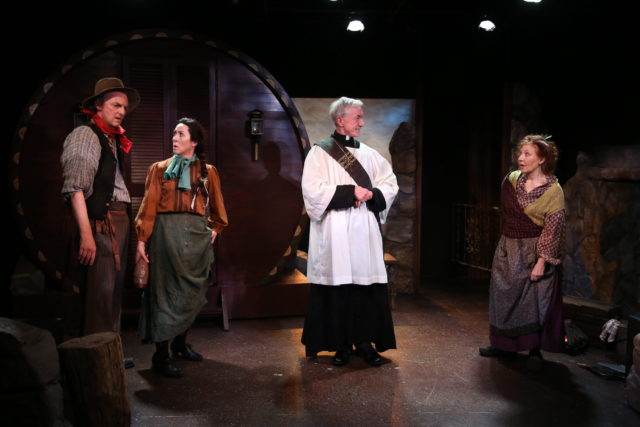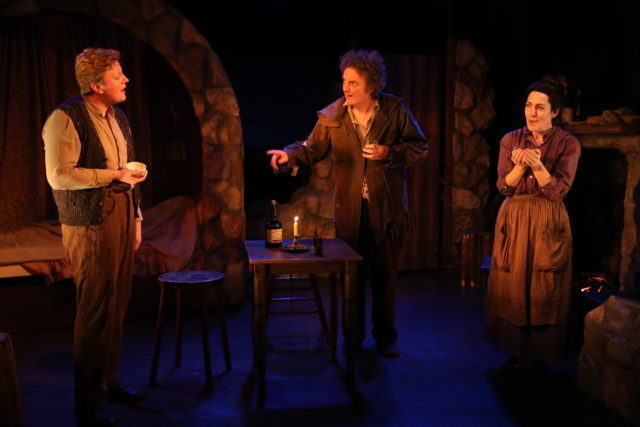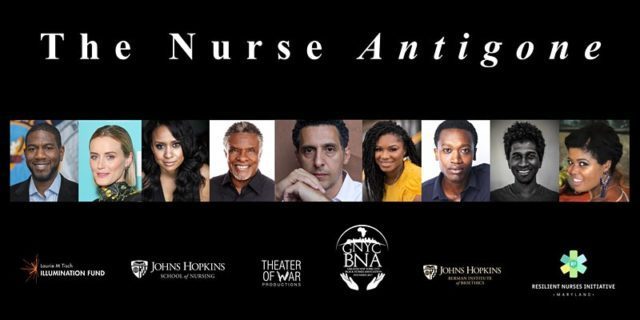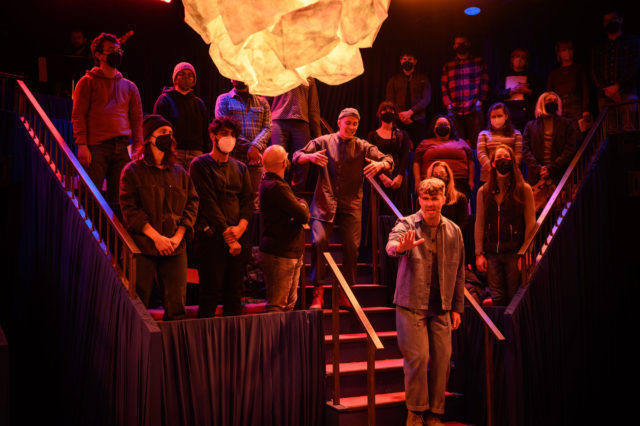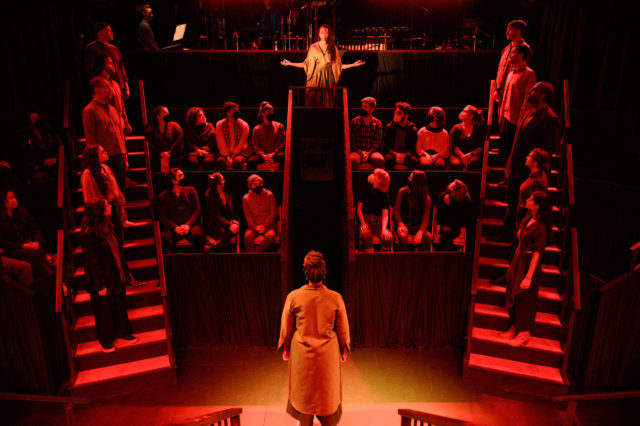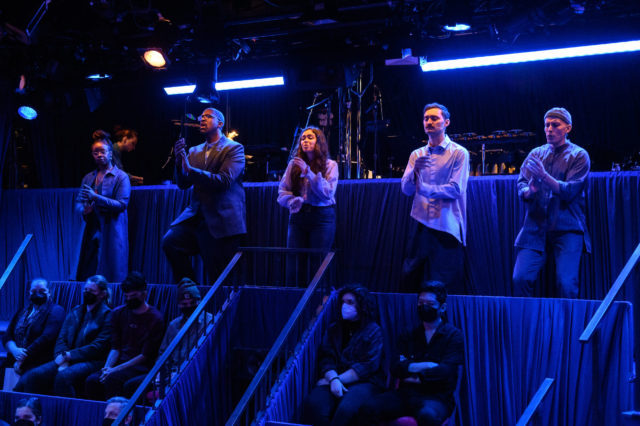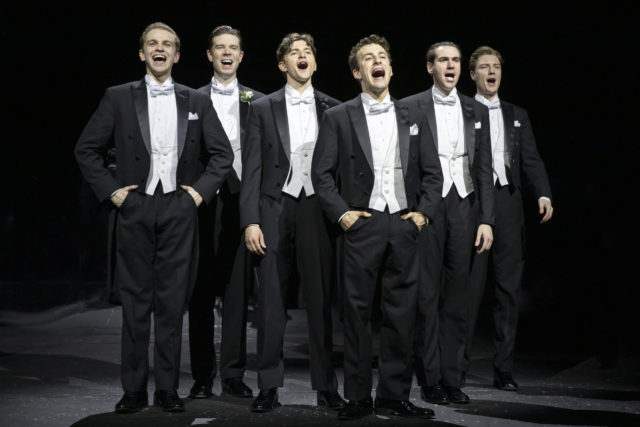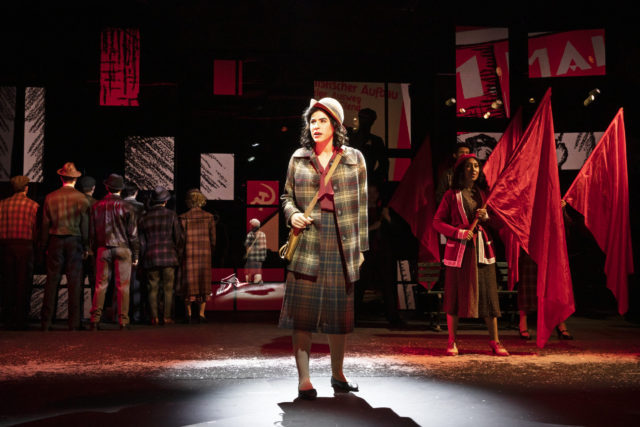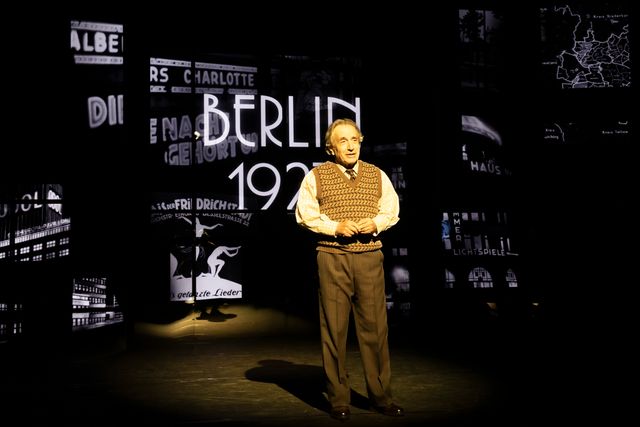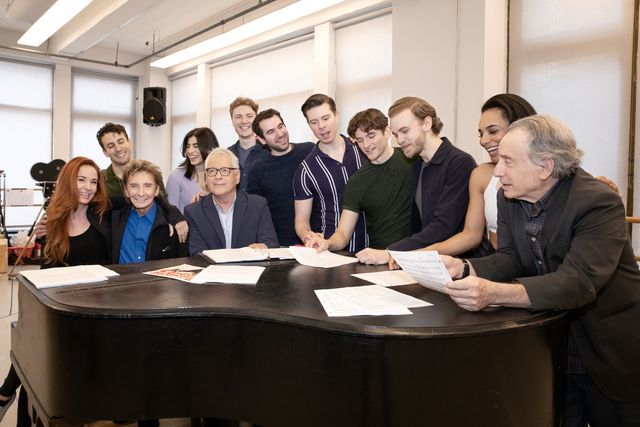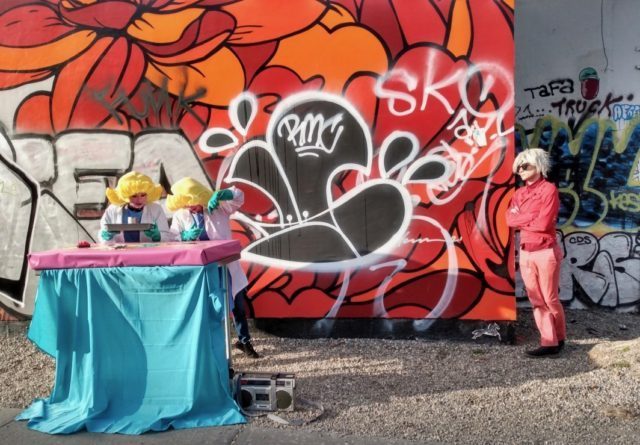
Audience members chase Andy Warhol through the East Village in immersive production (photo by twi-ny/mdr)
CHASING ANDY WARHOL
Astor Plaza, Broadway at East Eighth St.
Thursday, Friday, and Sunday through June 12, $80
online slide show
www.chasingandywarhol.com
www.batedbreaththeatre.org
The world has spent more than half a century chasing Andy Warhol. Our obsession with Drella, as he was known to his close friends — a combination of Dracula and Cinderella — developed quickly from his carefully constructed public image, his genre-busting films and Pop art, his (and our) fascination with celebrity, and the beautiful and unusual people he surrounded himself with, beginning with his emergence as an art superstar and fashion icon in the 1960s and continuing well past his death in 1987 at the age of fifty-eight.
In the last few years alone, works by or about Warhol, born Andrew Warhola Jr. in Pittsburgh, have been part of such exhibitions and films as “Andy Warhol: Photo Factory” at Fotografiska, the Todd Haynes documentary The Velvet Underground, “Andy Warhol: Revelation” at the Brooklyn Museum, “Jean-Michel Basquiat: King Pleasure,”“Gillian Wearing: Wearing Masks at the Guggenheim,” and “Alice Neel: People Come First” at the Met in addition to the brand-new Netflix series The Andy Warhol Diaries.
Now comes Chasing Andy Warhol, a guerrilla-theater-like immersive presentation by the Manhattan-based Bated Breath company in which an audience of no more than sixteen at a time follows Andy Warhol through the streets of the East Village, not far from many of his old haunts. The show begins in Astor Plaza, where you are given an old red plastic View Master to look at some photo collages to get you in the mood. Then an excited young “tour guide” (Jmonet Hill, Annika Rudolph, or Fé Torres; I saw Rudolph, who was delightfully energetic), carrying a small suitcase and a boombox (through which she blasts the soundtrack) and identifying herself as the world’s biggest Andy fan, is surprised by a pair of Warhols in blue dresses and heels — one of whom pops a small balloon that has the word “art” on it. They run off, and she sets out to find him.
As she leads us down Lafayette and Bowery to Great Jones and Bleecker, there are wigged Warhols in blue, black, and white everywhere (Kat Berton, Grayson Bradshaw, Alysa Finnegan, Teal French-Levine, Youran Lee, Marisa Melito, Luca Villa), but she is after the “real” one in red (Jake Malavsky, Brandon P. Raines, or Kyle Starling). The multiple Andys evoke Warhol’s silkscreen style of printing multiple images of Marilyn Monroe, Mickey Mouse, flowers, Elvis Presley, and other subjects in different colors.
Along the way, as the tour guide shares snippets about Warhol’s life and art, we encounter a puppet of child Andy (operated by Taylor McKenzie or Kayla Prestel) watching Ginger Rogers (Finnegan) posing in an empty white frame; Warhol and the puppet looking into a mirror that describes one of his medical disorders, Saint Vitus’ dance, which affected his movement; Andy engaging in a flirtatious dance with a hot basketball player (Mitchell Ashe) involving a wheeled fashion rack; a movie star (Katherine Winter) posing for paparazzi in front of a Chase bank (Chase — get it?); a dance in an alcove of stone chess tables; and fated meetups with Valerie Solanas (Alessandra Ruiz, who also plays Warhol’s mother, Julia) — just wait till you see what she uses for a gun — and Edie Sedgwick (Antonia Santangelo) in a glittering short dress.
Andy is never without his camera, and the audience is encouraged to take photos and video, but don’t get too caught up in documenting it or you’ll miss lots of cute small touches and clever references. A significant part of the fun is also watching people on the street passing by, wondering what’s going on. Of course, they immediately know it’s Warhol — has there ever been a more recognizable figure in New York City? — and many of them stop and take pictures, big smiles on their faces. But as one of the lucky sixteen audience members, wearing a clearly visible yellow Andy sticker, you can’t help but feel special, like you’re part of Warhol’s inner Factory circle. And the cast, which performs the seventy-five-minute show in forty-five-minute overlapping intervals, deserves extra kudos for strutting their stuff on the sidewalks of New York, particularly during these fraught times, where anything can happen at any time.
Chasing Andy Warhol is created and directed by Bated Breath artistic director Mara Lieberman, with fanciful choreography by Rachel Leigh Dolan, jubilant costumes by Christopher F. Metzger, sets by Christian Fleming, Meg McGuigan, and Jerry Schiffer, lighting by Joyce Liao, and sound and projections by Mark Van Hare. I have to admit that I was disappointed in two of the company’s recent indoor productions, Unmaking Toulouse-Lautrec and Beneath the Gavel, but now I’m kicking myself for having missed its immersive, outdoor, on-the-move Voyeur: The Windows of Toulouse-Lautrec, which they staged during the pandemic.
Chasing Andy Warhol concludes in an empty bar, where Warhol’s legacy as the original social media superstar is briefly explored. Could there ever have been a Facebook, Twitter, Instagram, or TikTok without Warhol’s obsession with public image and infectious celebration of celebrity and oneself? And, in turn, our obsession with Warhol, who managed his public persona like no one else?
“I am a deeply superficial person,” Warhol said. He also pointed out, “It’s not what you are that counts; it’s what they think you are.” In Chasing Andy Warhol, Lieberman and her talented team delve into the complex enigmatic character in unique, spirited ways, without avoiding his blemishes, as they pursue the mystery that was, and ever will be, Andy Warhol.
